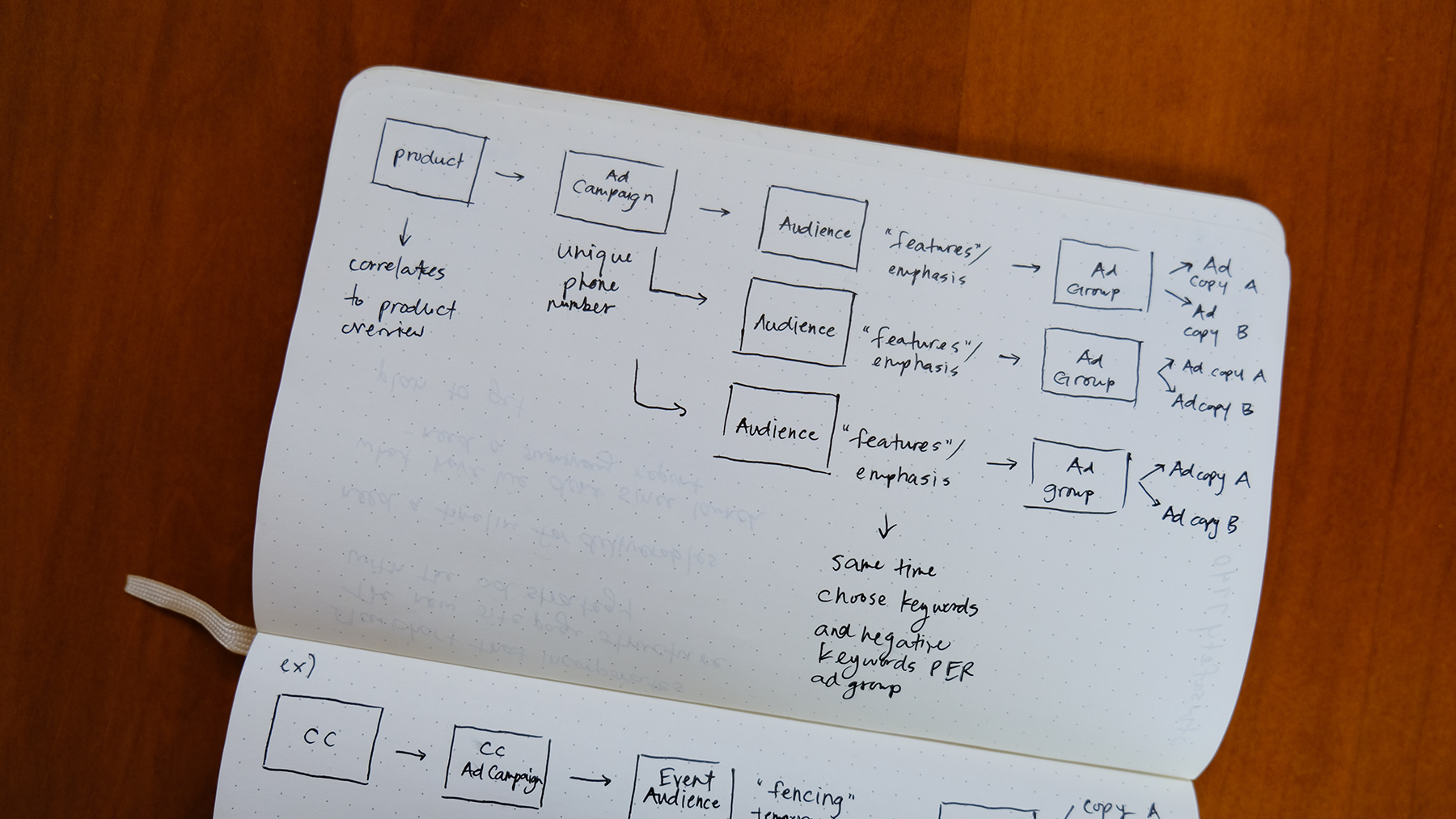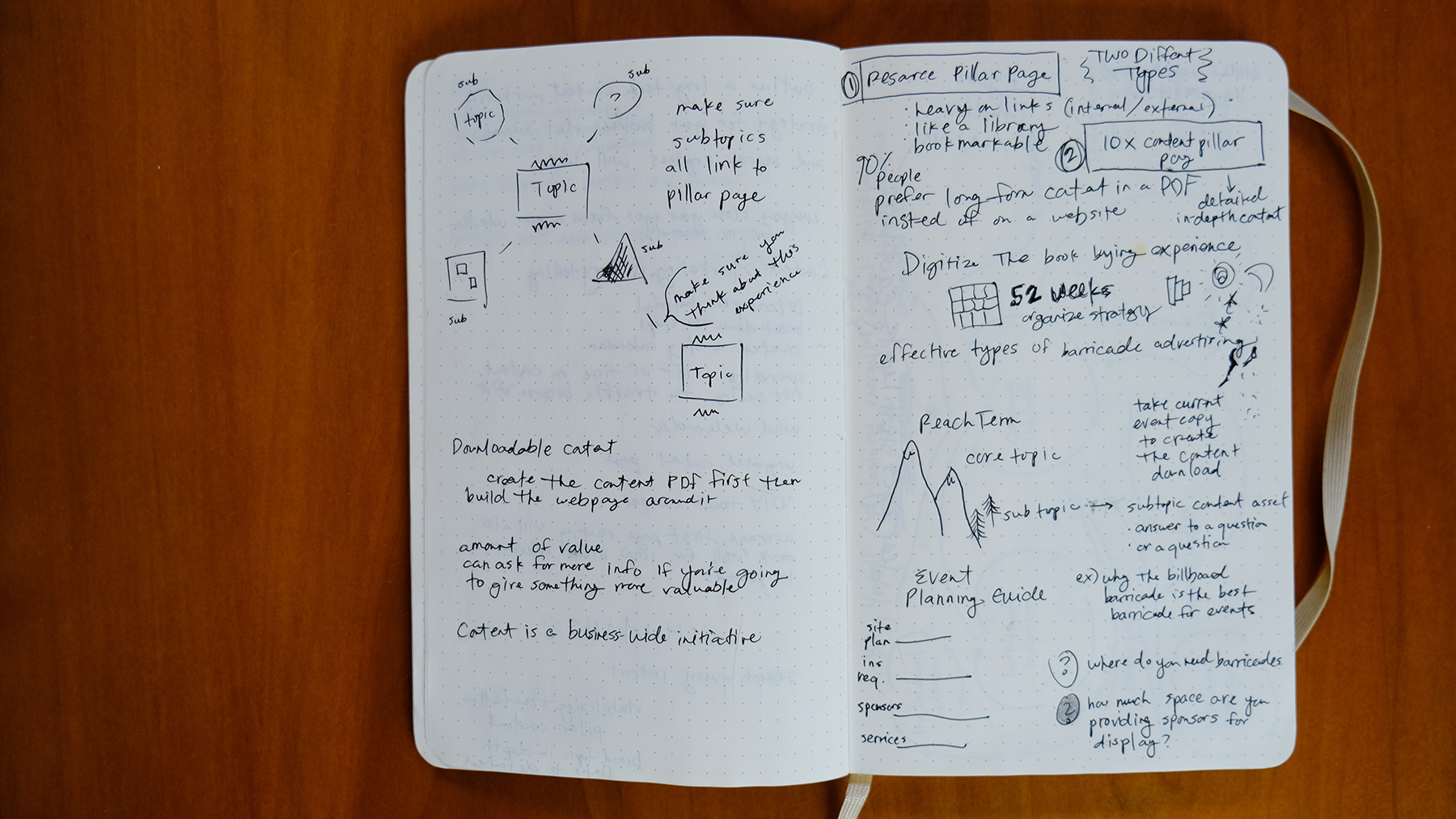After working with OTW Safety for a few years in a part-time design role, I took on a full-time position as Director of Marketing. I worked closely with the Director of Sales, COO and CEO on a host of initiatives to increase brand awareness among key industries, attract and nurture online leads, and tie marketing efforts directly to sales in order to determine ROI. One of the most effective endeavors I worked on was a content development campaign aimed at gaining top spots for the company’s most valued keywords.
I managed a two-year content creation campaign in which I wrote, edited, organized and designed a variety of user-centric content pages. The campaign led to a huge increase in organic search rankings and new customer acquisition.
Creating a Content Marketing Strategy
The initiative started in early 2018 when we hired a new digital agency with an affinity for improving organic search rankings. Through their research they found no one in the safety barricade space was really targeting keywords aggressively through content development. OTW had recently adopted Hubspot as their CRM so we decided to make use of the marketing platform as well and track the performance of the new content.
Defining Pillar Pages and Reach Terms

The new site would be focused around pillar pages of foundational content, each with an associated reach term, and supported by more specific subtopic pages. The goal was to create content for very specific users instead of just content about the products. We wanted to attract audiences like go-kart track owners, road construction companies, zoos, etc.
First I took stock of the existing content and consulted the team about which search terms were the most important. Next I defined all the new pages of content we wanted to produce and tied each one to a pillar page. By integrating keyword research with the site map we had an outline of how the site would be built out and we were able to prioritize content publication.
Tieing Ad Campaigns to Content Pages

Along with mapping out the content development strategy we tied each ad campaign to a specific landing page. In this way we could tailor the ad copy and create transitions between ads and landing pages that were seamless for users. Working with an outside agency this reference document helped everyone stay on the same page with regard to publishing and prioritizing.
Publishing Content
We continued to write and publish audience-specific content, as well as event blogs, technical articles, product tutorials, and industry-related news. We also started making videos specific to each product and building out the youtube channel.
With Hubspot we were able to measure how many customers, not just leads, first entered the site by landing on the new content pages. Comparing paid to organic leads we were able to decide how to allocate the online marketing budget.
Before hiring a writer I wrote many of the blog articles and pages of content including:
- Traffic Barricade Pillar Page
- Theme Park and Zoo Barricades
- Go-Kart Barricades
- Event Barricades
- Event Planning Services
- Spike 150 Celebration
- Low Profile Barricade
Measuring Effectiveness
Not only did our rankings increase tremendously, sales to organic search customers outpaced paid search customers in terms of dollar amount and second and third-time purchases. Having designed and launched many websites prior to this, I was amazed at the effectiveness of good content compared to just good design. The results were so positive the team decided to hire a writer directly so we could publish even more (and so I could do other marketing tasks!). Using Hubspot we could link each page entrance to customers and sales so the ROI spoke for itself.
